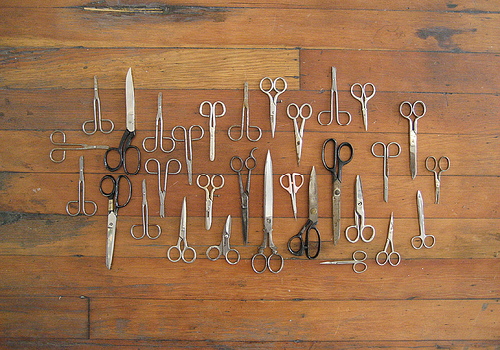3 Questions to Ask As You Cut Your Manuscript

The 2015 “Now What?” Months are here! Throughout January and February, we’ll be bringing you editing, revision, and publishing advice from all corners of the publishing world. Today, Sarah Ahiers, author of All That Remains, tells us why we should be unafraid of making big cuts during revision:
I’m a bit of a NaNoWriMo cheater. As long as I get my word count done for the day, I allow myself to edit in November. Usually it’s just line edits—fixing typos, changing dialogue, adjusting a line here or there. But, when NaNo rolls to an end, I’m left with a fairly clean draft.
When I reached the end of my novel All That Remains (new working title Assassin’s Heart) in NaNo 2012, the story was in place, but I knew I had to bring out and uncover other elements, like my themes, my settings, and especially my character arcs.
Revisions are some of the hardest things to tackle as a writer. Many times you know something needs to be fixed, but you don’t know how to fix it. Or you’re willing to fix whatever needs fixing, but you just don’t know what that is. Take your time. It’s not a race, and if you rush through revisions it could lead to regret. Here are a few questions I asked myself:
Are my themes developed enough?
The first thing I did was cut. I looked at each scene and asked myself: Does this scene forward the plot, the character arcs, or the theme? If it didn’t, it had to go.
If it only forwarded one of those things, could it do double duty by forwarding the plot and the theme? Or all three?
Does my setting feel grounded and encompassing?
Because I was writing fantasy, I needed to work on my world building, clarifying spots where the reader might get confused about my world.
I also had to do research—like when were indoor toilets first used? Or what were renaissance kitchens like?
Are my characters’ emotional arcs where they need to be?
Two characters had to go because they didn’t further the plot or themes in any way, and anything important they did could be handed to other characters.
Once the fat was trimmed, I built up things that needed growth. Don’t think that polishing your manuscript with line edits is all that it takes. That’s the final stage of revision and though it must be done, it shouldn’t be done in place of the bigger revisions your manuscript most likely needs.
When all was said and done, it took me close to a year to revise and workshop my manuscript, then send it out to beta readers and critique partners.
But taking my time paid off! The manuscript was so much tighter. Every scene had been cleaned and scrubbed and my characters grew and changed and the themes were delicate when they needed to be and robust when I wanted. And I didn’t miss those cut characters—even if one had been pretty cool—or any of the cut scenes (I couldn’t even remember some of them).
Don’t be afraid to make drastic changes. Cut those characters and scenes, even the ones you think the story can’t live without. Cut them, and see how you will rewrite the story without them. If it doesn’t work, you can always go back to the old version. Nothing has to be permanent in revisions.
Revision is hard work. Writing the draft is hard, too, but revision is a different kind of hard, and while the results are worthwhile, in the midst of revisions that can seem far away.
Still, it is worth it. You spent all that time and energy writing the book, don’t sell yourself short by not revising as much as your book needs. You can do it.

Sarah Ahiers has an MFA in Writing for Children and Young Adults and lives in Minnesota with three dogs and a house full of critters. She has a collection of steampunk hats and when she’s not writing she fills her time with good games, good food, good friends and good family. She blogs at Sarah Ahiers Writes.
Top photo by Flickr user reebob.
Chris Baty's Blog
- Chris Baty's profile
- 63 followers



